Idea by
Sadia Humayra Mounata
ALT-TOPIA
https://shmounata1302.wixsite.com/sadia-alt-topia
Call for ideas 2021
Empathy playground
Empathy playground
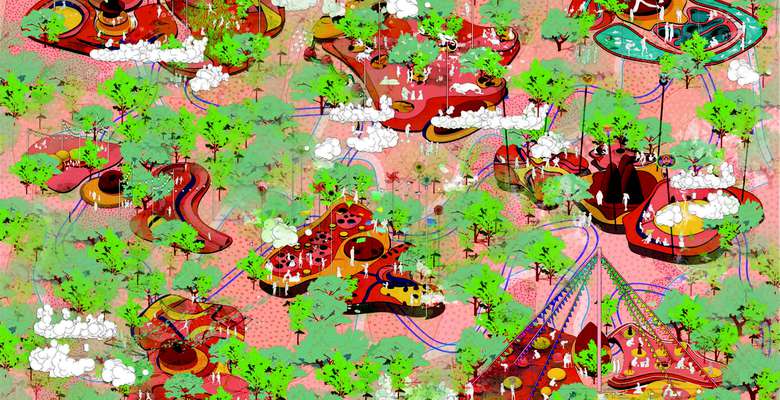
- Systemic changes
How do you practice empathy? The ‘functions’ in architecture are predetermined by the society and culture which encourage the people to nourish their other drives and practice the external codes of different closed groups. The evolving functions or the emerging functions are all based on the past situation. Through an in-depth analysis this approach has come to identify a program looking towards the future, capable of looking with positive and concrete eyes. A structured and achievable program. A project that involves the child, the one who will be the young-adult-senior of the times to come. In particular, an imaginative playground is proposed, aimed at teaching empathy. Perhaps the child educated with empathy, the adult of tomorrow, will be able to overcome with greater serenity and respecting the environment in which it is found and imagining how they will live in the future. This proposal is for imagine the program of a playground in the city for the aim of practicing empathy.
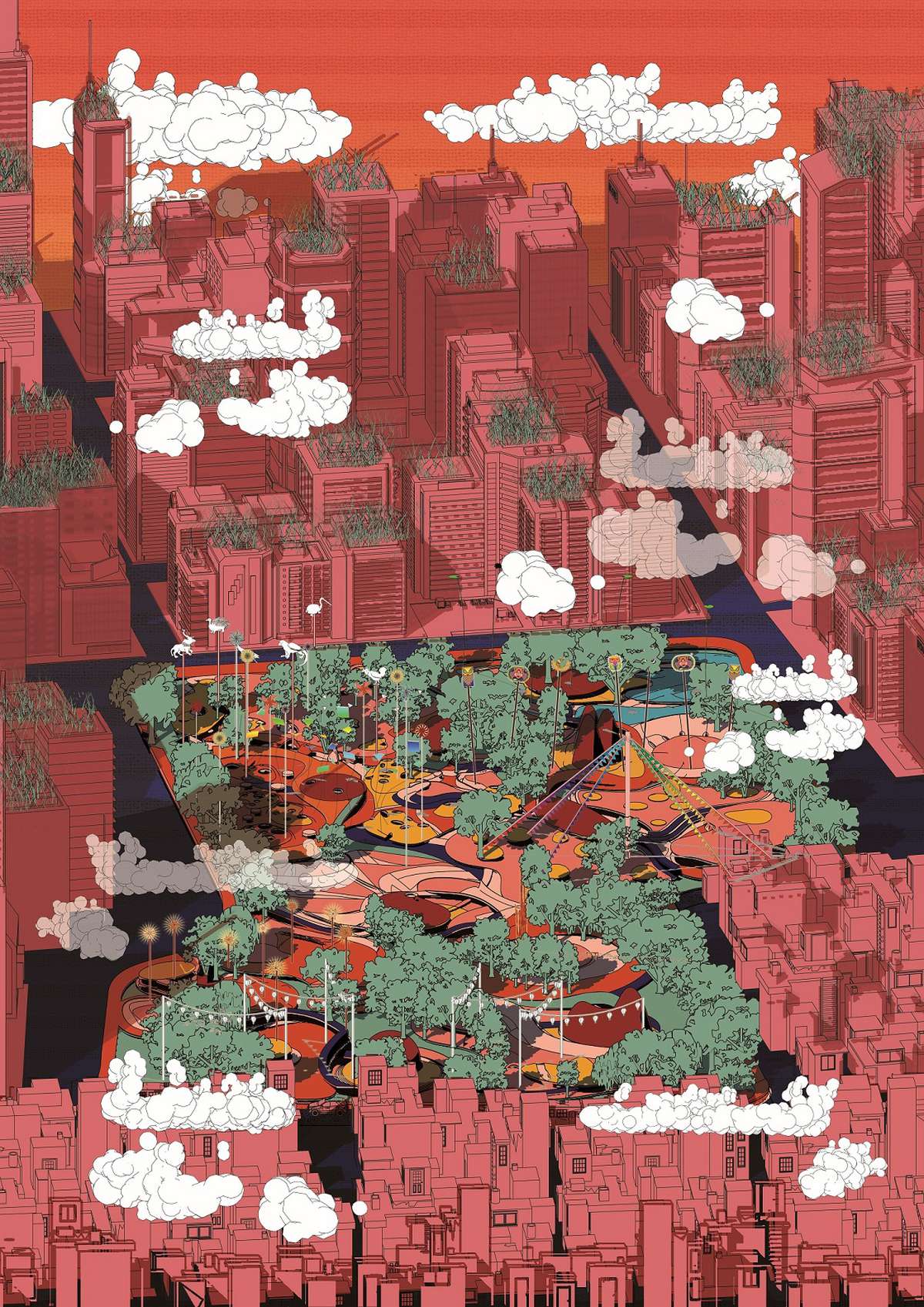
Creating a place for children to practice empathy, extended empathy and long-distance empathy before and present any form of institutionalization and adulteration can be a way to build empathic connectivity in a society. An empathic moment requires both intimate engagement and a measure of detachment. Empathy requires a transparent boundary between two that allows the identity of two beings to mingle in a shared mental space. And this shared mental space requires a space to present them. And the
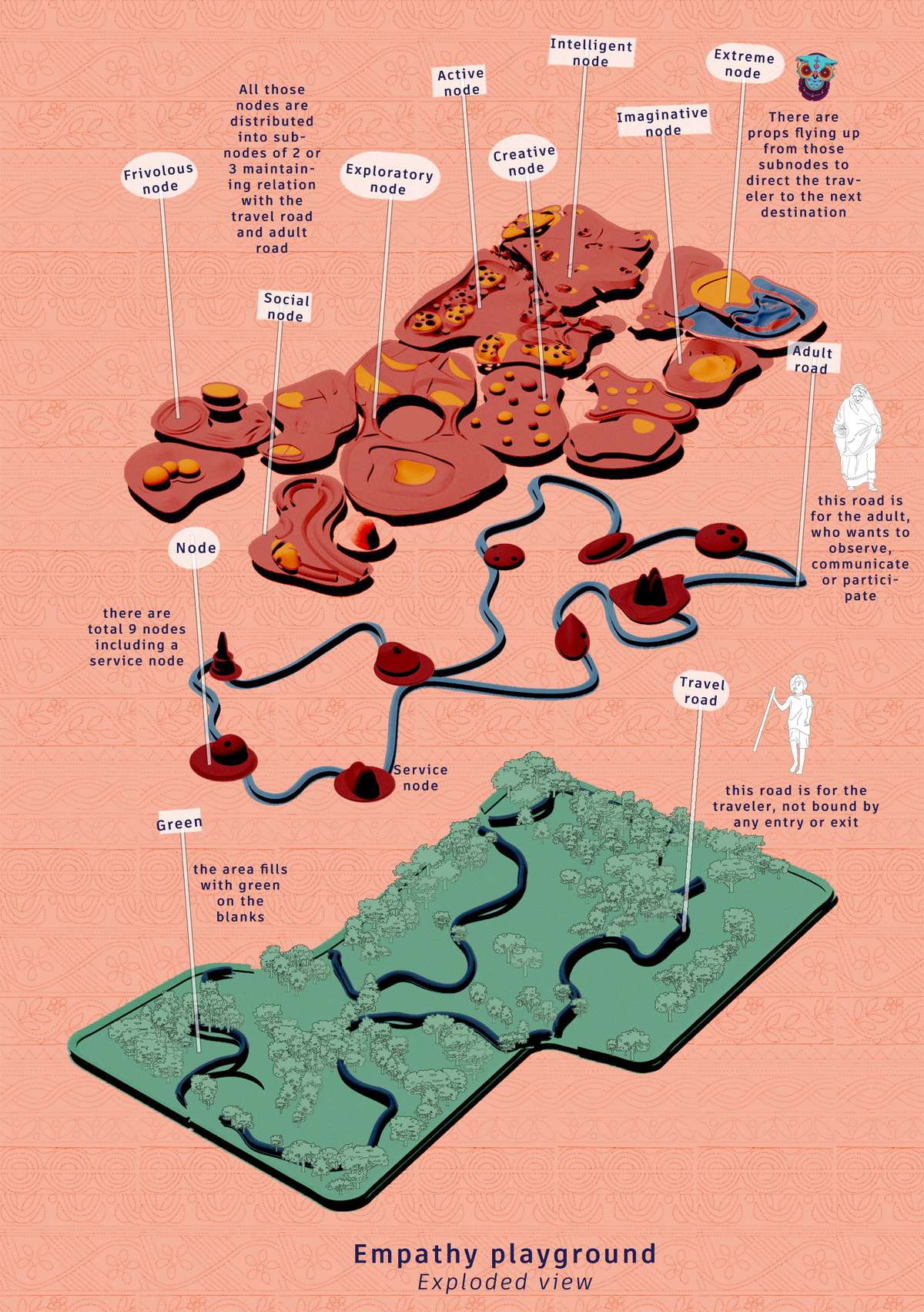
Here the activities are extracted from children books, poems, video games, TV shows, movies, virtual reality and childhood memories. The deep dive in the world and emergence of empathy practice shaped the activities and attributes in this part. The activities are sorted out by
Empathy - mirror neuron
Empathy - Collaboration (time share)
Empathy - Aesthetic
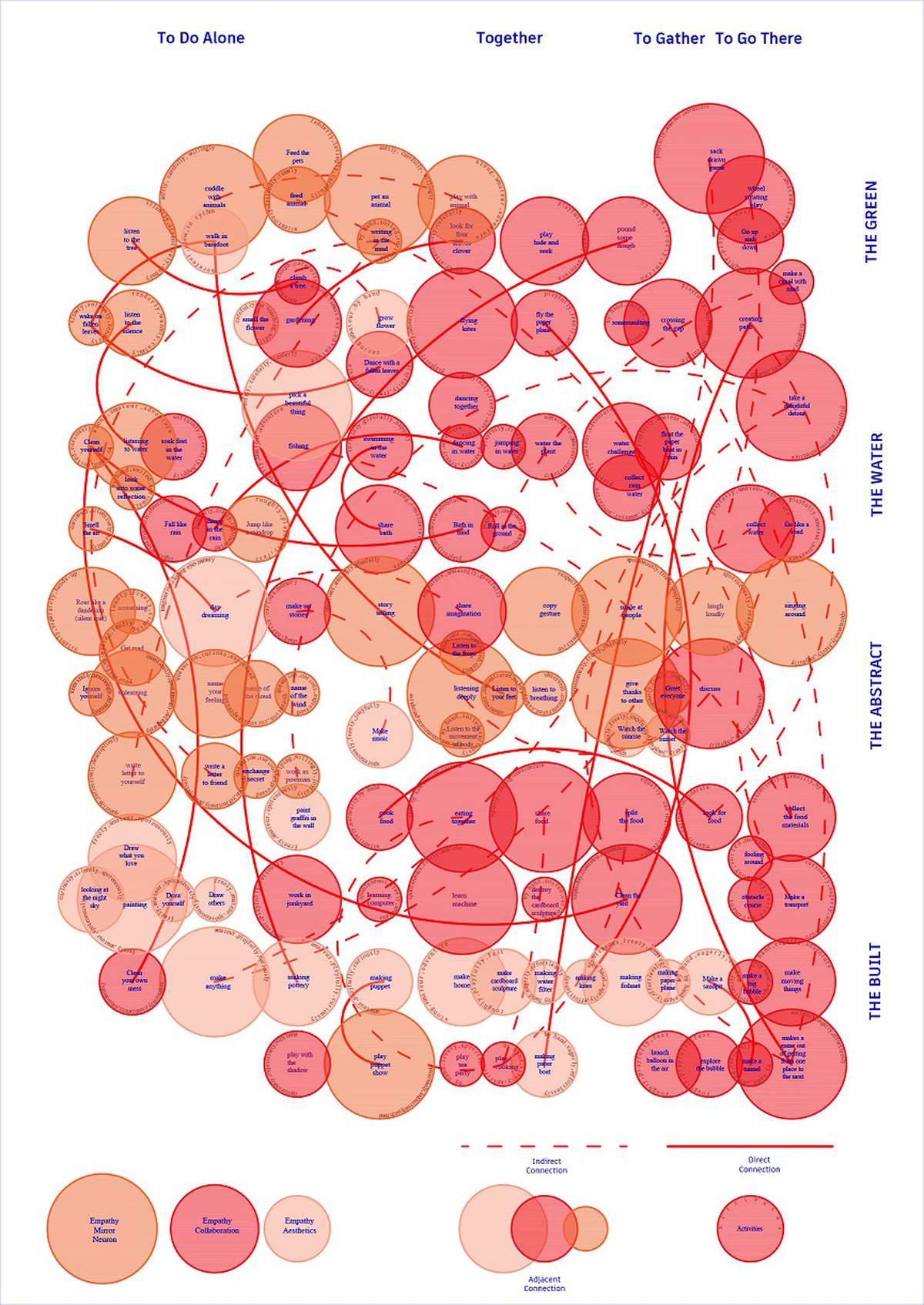
All those activities with attributes are distributed to eight gather point, which is named as ‘Node’ to specified certain kinds of activities in certain kind of node though not exclusively but independently.
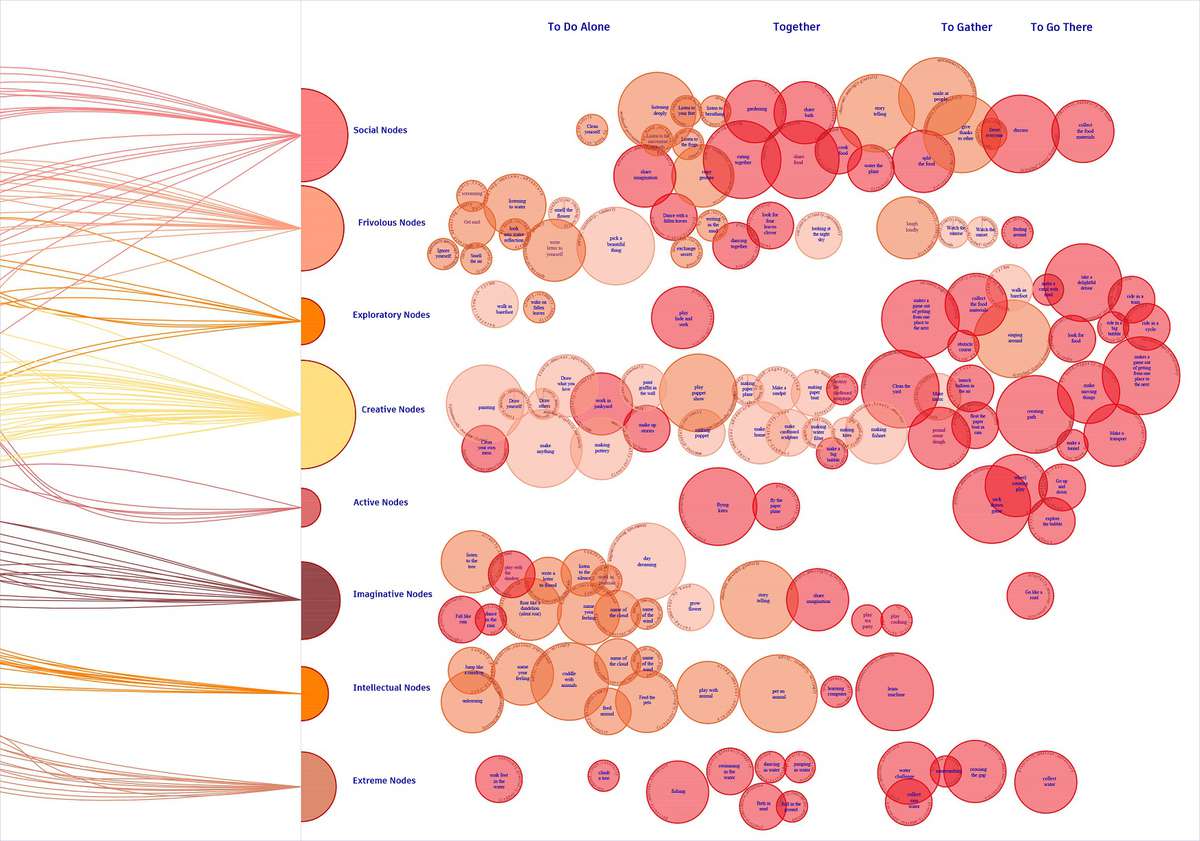
The distribution of the activities in four different attributes in terms of ‘how you do it’
To do alone
Together
To gather
To go there
Again the activities are redistributed into environmental attributes of ‘how you do it’
The green (as trees and nature)
The water (as any kind of water-body)
The air (as nothing is needed)
The built (as constructed environment)
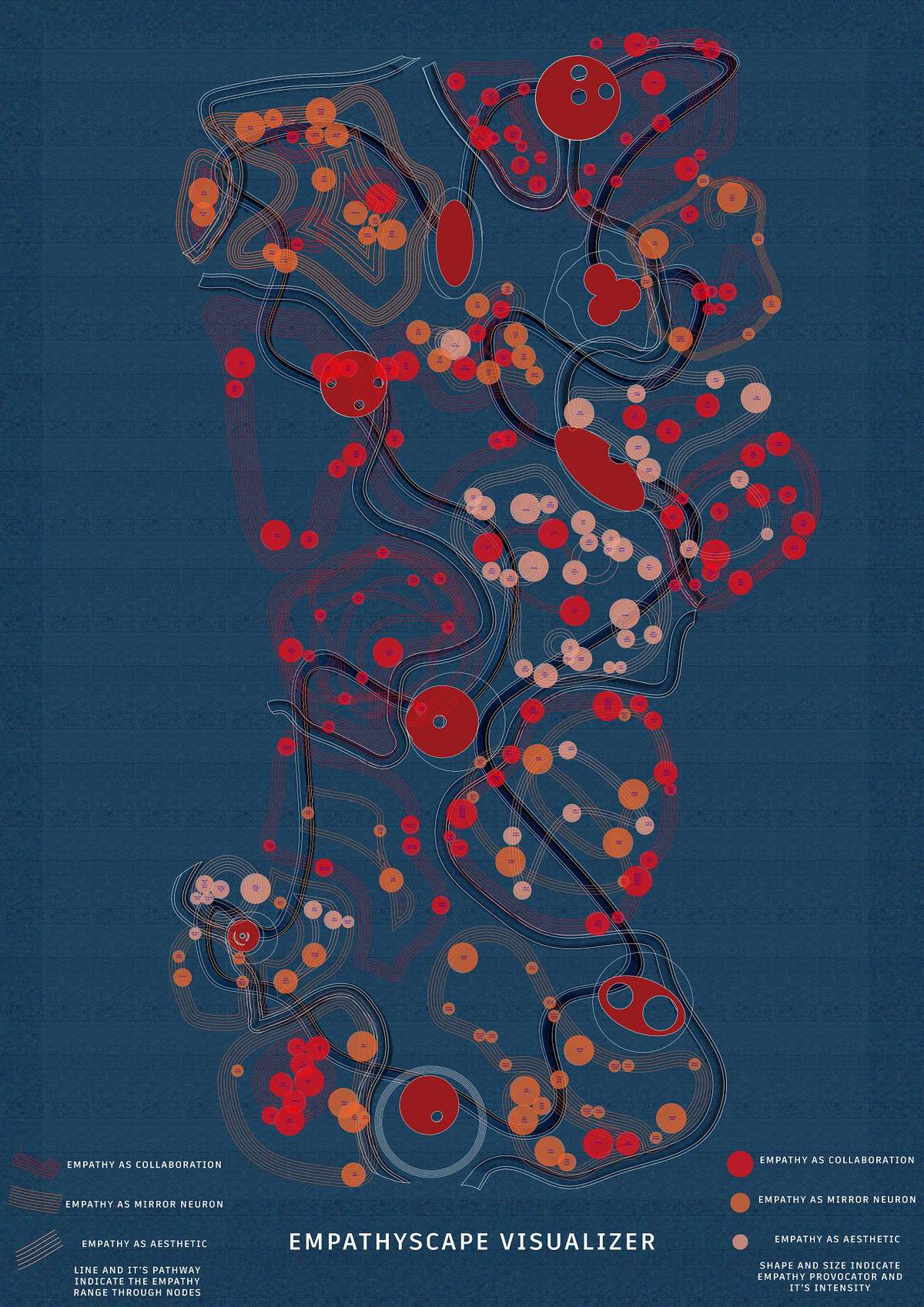
Empathy Is a Clock That Ticks in the Consciousness of Another: The Science of How Our Social Interactions Shape Our Experience of Time.
“We may be born alone, but childhood ends with a synchrony of clocks, as we lend ourselves fully to the contagion of time.” - Alan Burdick
Empathy playground
Empathy playground

- Systemic changes
How do you practice empathy? The ‘functions’ in architecture are predetermined by the society and culture which encourage the people to nourish their other drives and practice the external codes of different closed groups. The evolving functions or the emerging functions are all based on the past situation. Through an in-depth analysis this approach has come to identify a program looking towards the future, capable of looking with positive and concrete eyes. A structured and achievable program. A project that involves the child, the one who will be the young-adult-senior of the times to come. In particular, an imaginative playground is proposed, aimed at teaching empathy. Perhaps the child educated with empathy, the adult of tomorrow, will be able to overcome with greater serenity and respecting the environment in which it is found and imagining how they will live in the future. This proposal is for imagine the program of a playground in the city for the aim of practicing empathy.
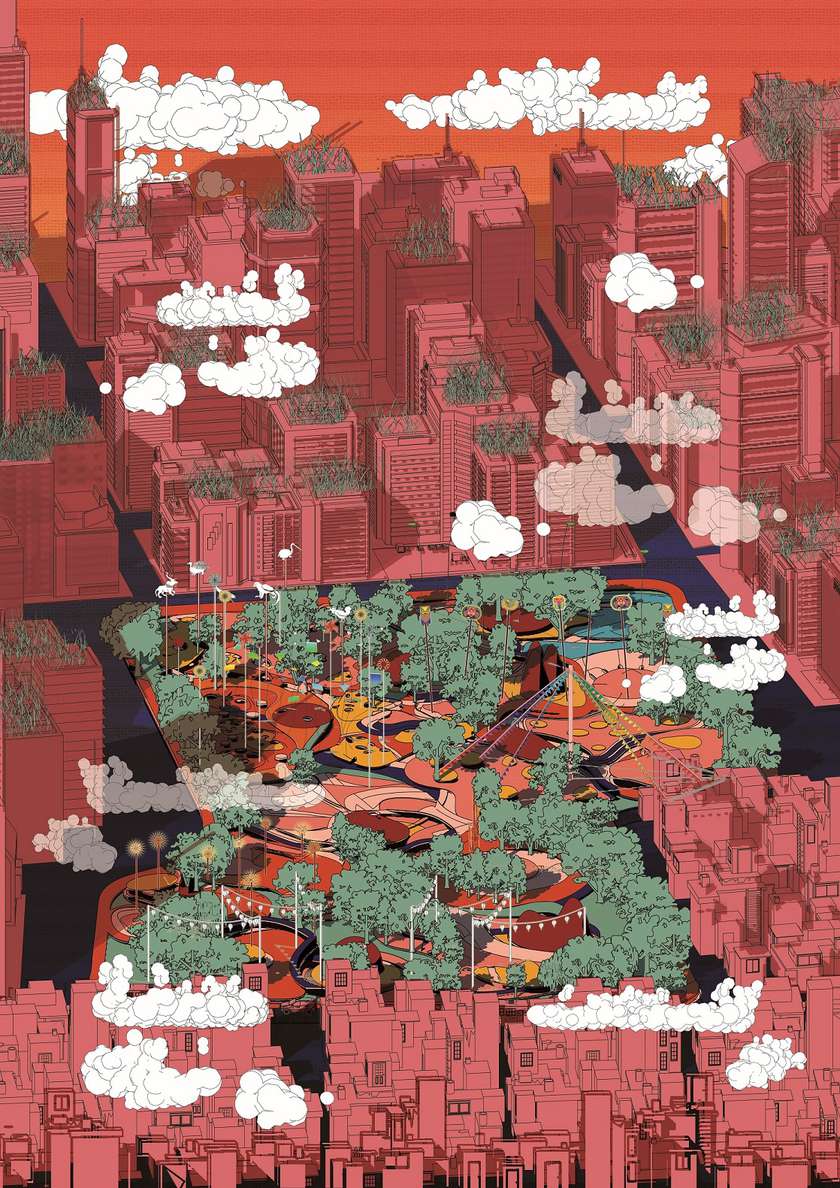
Creating a place for children to practice empathy, extended empathy and long-distance empathy before and present any form of institutionalization and adulteration can be a way to build empathic connectivity in a society. An empathic moment requires both intimate engagement and a measure of detachment. Empathy requires a transparent boundary between two that allows the identity of two beings to mingle in a shared mental space. And this shared mental space requires a space to present them. And the
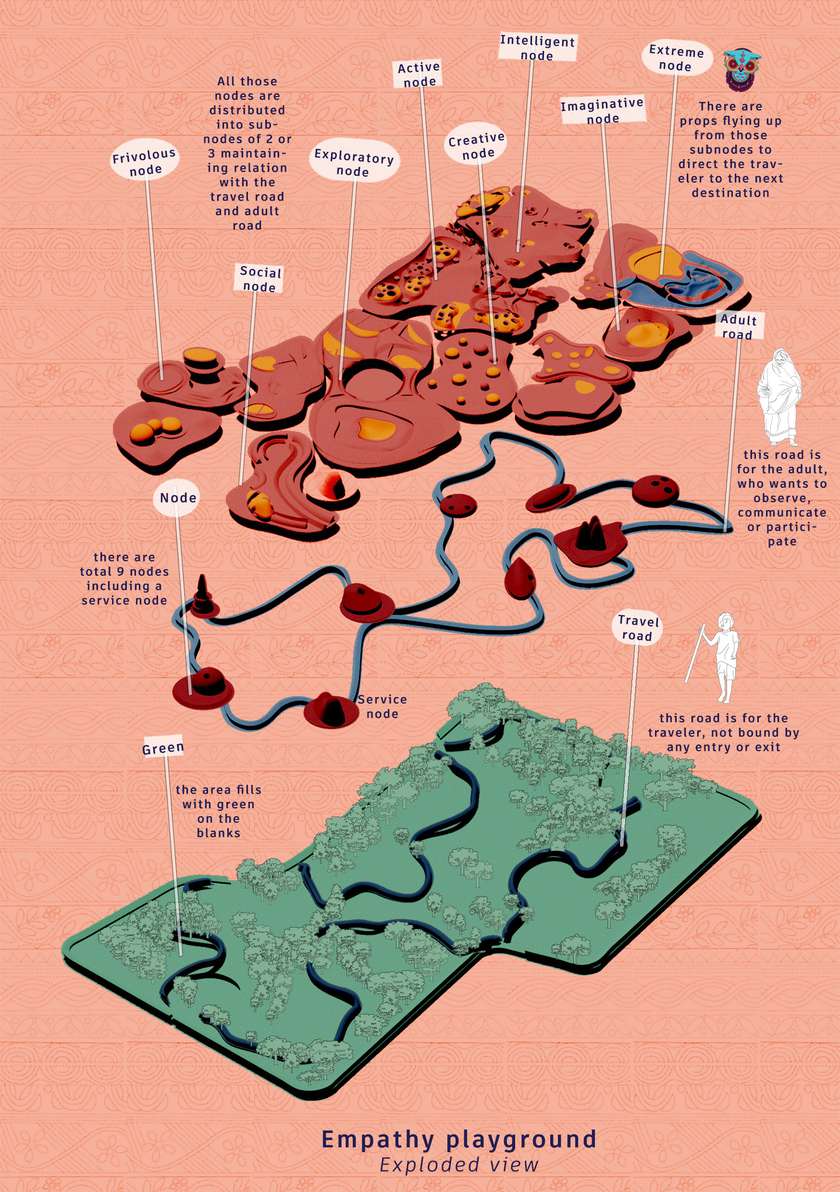
Here the activities are extracted from children books, poems, video games, TV shows, movies, virtual reality and childhood memories. The deep dive in the world and emergence of empathy practice shaped the activities and attributes in this part. The activities are sorted out by
Empathy - mirror neuron
Empathy - Collaboration (time share)
Empathy - Aesthetic
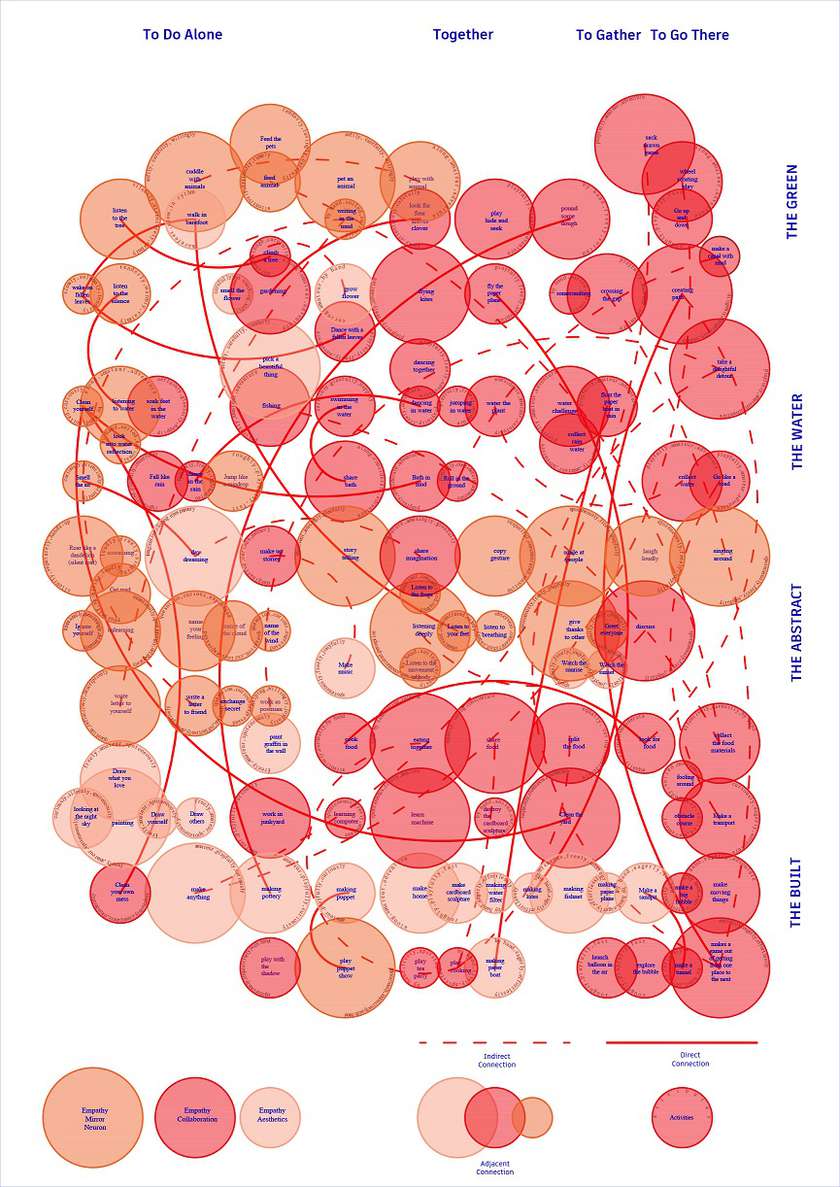
All those activities with attributes are distributed to eight gather point, which is named as ‘Node’ to specified certain kinds of activities in certain kind of node though not exclusively but independently.
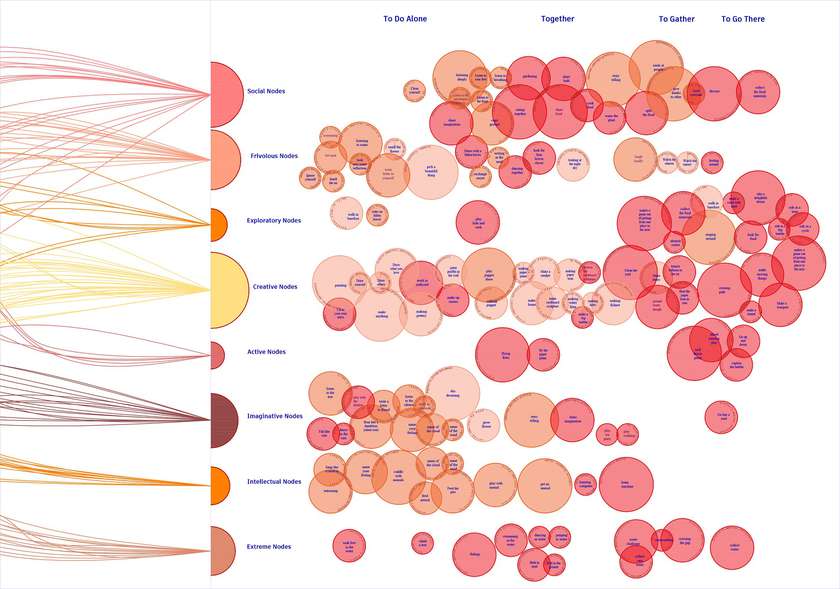
The distribution of the activities in four different attributes in terms of ‘how you do it’
To do alone
Together
To gather
To go there
Again the activities are redistributed into environmental attributes of ‘how you do it’
The green (as trees and nature)
The water (as any kind of water-body)
The air (as nothing is needed)
The built (as constructed environment)

Empathy Is a Clock That Ticks in the Consciousness of Another: The Science of How Our Social Interactions Shape Our Experience of Time.
“We may be born alone, but childhood ends with a synchrony of clocks, as we lend ourselves fully to the contagion of time.” - Alan Burdick